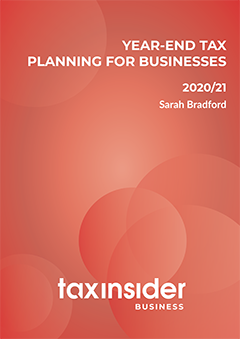Introduction To Partnership Year-End Planning
The legal definition of a partnership is the relationship that subsists between persons carrying on a business in common with a view to profit. In looking at year-end planning for partnerships, it is necessary to consider both the position of the partnership and the individual partners. The partnership must file a partnership return showing the total income, losses, credits, and charges for the partnership for each period of account ending in the return period. It must also show each partner’s share of the income, loss, credit or charge. The return must also show the disposal of any chargeable business assets, showing how the gains and losses have been allocated to the partners. Many of the year-end tips outlined in section 2 above apply equally to partnerships and the individual partners. This section looks at additional considerations specific to partnerships. It deals with partnerships comprised only of individuals.
Partnership Profits
The same rules apply to determine the profits of the partnership as apply in determining the trading profits of a sole trader or unincorporated business, as set out in Section 2.
Consequently, many of the tips included in that section, such as obtaining relief for expenses and capital expenditure and timing of expenses and receipts apply equally to partnerships. Where the conditions for the cash basis are met, partnerships can elect to use the cash basis to prepare accounts. Where a cash basis election is not made, accounts must be prepared using the traditional accruals basis. Further details on the basis of preparation can be found in Section 2.2.
Practical Tip
Take account of the planning tips in Section 2 where they are relevant to the partnership.
Payments By Partnership To Partners: Distribution Or Expense?
In preparing the partnership accounts, payments to partners should be reviewed to ensure that they have been treated properly. Consideration should be given to whether the payment is an expense of the partnership or a distribution of profits.
A payment to a partner is only a partnership expense if it was incurred wholly and exclusively for the purposes of the partnership. Unless that rule is met, HMRC will regard the payment as a distribution to the partner. Payments of a partner’s personal bills, for example, are a distribution of profits, not a partnership expense. However, the payment of rent to a partner for the use of a property used by the partnership is deductible.
Practical Tip
Check payments to partners that represent expenses of the partnership have been deducted in computing partnership profits (and that payments representing distributions of profit have been treated accordingly).
Interest Deductions: Partnership
The partnership can deduct interest where it is incurred wholly and exclusively for the purposes of the partnership. This is subject to the £500 cap applying where accounts are prepared under the cash basis.
In a partnership scenario, there are some special cases in relation to interest. For example, a partner may borrow money to buy an asset personally which is used by the partnership. Where the partnership pays interest on the loan, this will normally be deductible in computing the profits of the partnership.
By contrast, if the partnership pays interest on a partner’s capital accounts, this represents an allocation of profit and is not deductible in computing partnership profits.
Practical Tip
Review interest paid by the partnership and check that a deduction is claimed where permitted.
The above article is an excerpt from our newly updated and released business report Year-End Tax Planning for Businesses.
To get the full scoop go here: Year-End Tax Planning.




